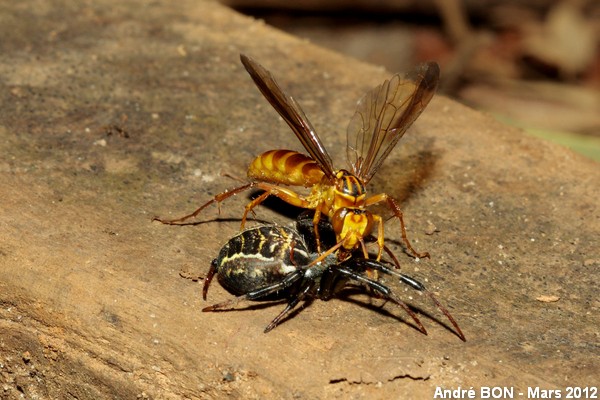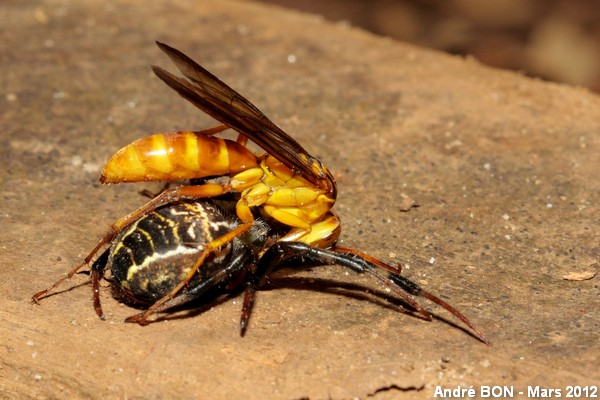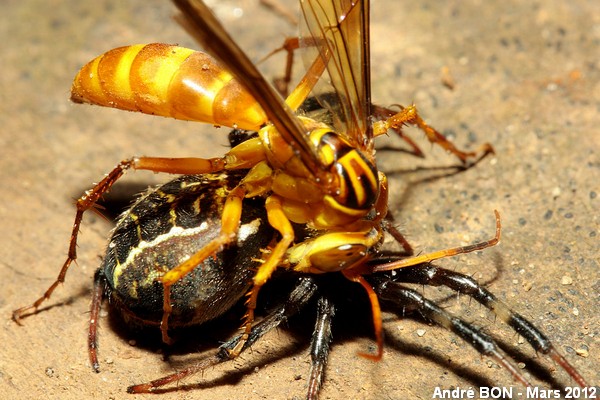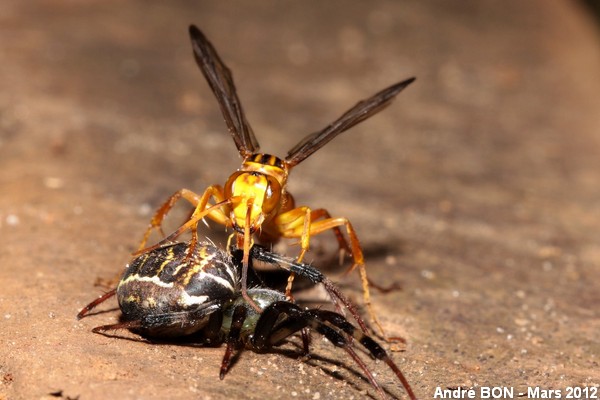



| Poecilopompilus sp. (Howard, 1901 ) |




|
|
Scientific name: Poecilopompilus sp. (Howard, 1901 ) Common name: French name: Order: Hymenoptera Family: Pompilidae Wingspan : Biotope: Open habitats, woodland edges, road and track sides, river banks. Geographic area: Mainly in South America, a few species are found in North America and in Central America. Observation period : |
The insects of the Pompilidae family are solitary wasps which are mainly predators of spiders. Females temporary paralyze their preys. They drag each one into a separate burrow where they lay a single egg on it. Then the burrow is closed. The larva will grow feeding on the spider. Telling apart Pompilidae genus or species is a rather difficult task. Here is a small resume of what I have found for the Poecilopompilus genus (information for females only). The Poecilopompilus genus is part of the Pompilini family whose members show a deep depression between the head and the pronotum. The pronotum shows a transversal groove near the front (streptaulus). The pronotum is generally shorter or the same length as the mesonotum (second plate on the upper side of the thorax). The eyes are not hairy. Here is some information extracted form a key helping to tell apart females of the Poecilopompilus genus. The propodeum, first abdominal segment merged with the thorax, does not show any lateral points at the back. The legs have spines. The anal vein of the hind wings does not turn with a sharp angle to reach the median vein (thru the transverse median vein), there is a smooth curve. The jugal lobe is small and does not exceed one half of the sub-median cell length. The anal vein reaches the median vein beyond the start of the cubital vein. There are spines on the under side of the tips of the tarsi. The fore legs tibiae bear spines on the upper side. Males and females feed on flowers. They have to choose rather flat flowers because of their very short proboscis. |
| [To know more about the Poecilopompilus sp.] [Next picture] [Top] |

|
I have observed this hymenoptera on the Cayenne peninsula while walking along the Montabo footpath. Shooting several pictures has been rather easy as this female was busy with one spider. This picture has been one of the most useful to follow the identification key of the genus because you can clearly see the veins on the hind wing. |
| [To know more about the Poecilopompilus sp.] [Next picture] [Previous picture] [Top] |

|
Side view. |
| [To know more about the Poecilopompilus sp.] [Next picture] [Previous picture] [Top] |

|
You can clearly see the spines on the upper side of the fore leg tibiae on this close-up picture. |
| [To know more about the Poecilopompilus sp.] [Previous picture] [Top] |

|
Front view. you can see the long antennae, the ocelli and the eyes converging on the upper side of the head. I have not been able to tell the spider species apart, maybe one Argiope sp. |